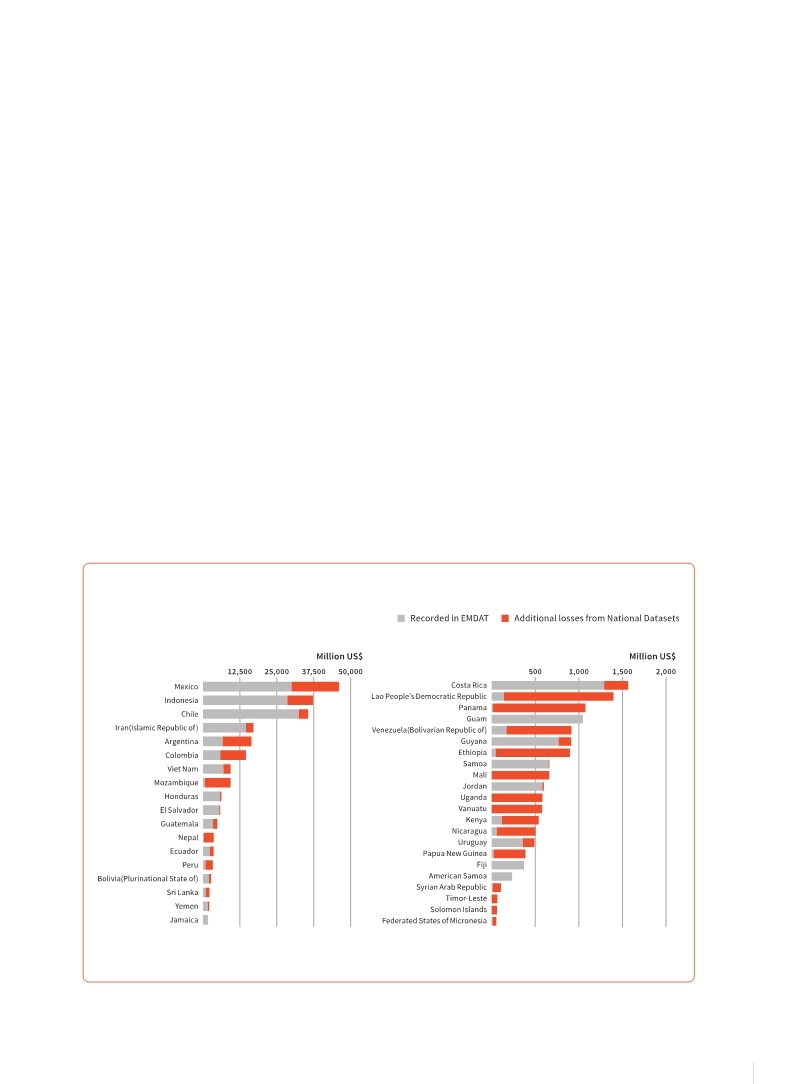 |
Global Assessment Report on Disaster Risk Reduction 2013
From Shared Risk to Shared Value: the Business Case for Disaster Risk Reduction |
 |
Global Assessment Report on Disaster Risk Reduction 2013
From Shared Risk to Shared Value: the Business Case for Disaster Risk Reduction |
|
|


|

38
Part I
(Source: UNISDR, based on DesInventar and EM-DAT combined datasets)
Figure I.1 Direct economic losses in 40 countries as estimated from national and global loss databases, 1981–2011 (in million US$)v
“One trillion dollars have been lost in the last decade due to disasters and one million people killed”.i Such statements are familiar to investors and business developers. But they only partially reflect total disaster losses.
The full scale of disaster losses is still not fully understood. Reliable data exist on insured lossesii and many major, intensive disasters are comprehensively assessed. iii Between 2001 and 2011, global reinsurer Munich Re. reported about US$1.68 trillion in losses (Munich Re., 2012), a calculation based on insured losses and estimates of insurance market penetration. Over the same period, EMDATiv , the major public global disaster database, reported US$1.25 trillion in losses. But neither provides a complete picture of global disaster losses, as none accounts for uninsured losses associated with recurrent, smaller-scale, extensive disasters, particularly in low and middle-income countries.
A growing number of national disaster databases now provide access to detailed data on these losses. When combined with assessments of direct losses in major disasters as recorded by EMDAT, these data provide a more complete picture of the real dimension of direct disaster losses. Figure I.1 shows what this picture might look like in the 40 low and middle-income countries with the largest losses recorded in national disaster databases.
Direct economic losses in housing, local infrastructure and agriculture were modelled for all smaller disasters documented by national disaster databases but not captured by EMDAT. Losses documented in EMDAT for larger disasters include estimates of damage to large capital intensive infrastructure that are generally not captured in national disaster databases. The resulting combined dataset provides the most complete estimate of direct disaster losses possible with
|



 |
